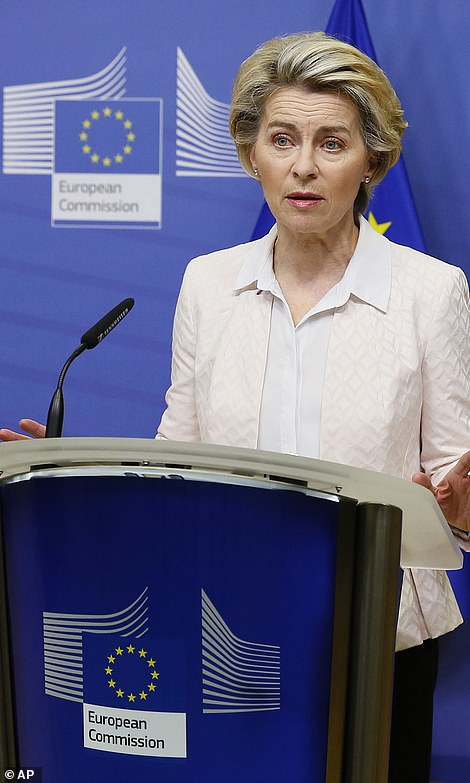U.S.-Iran Nuclear Talks End: Key Differences Remain

Table of Contents
Sanctions Relief Remains a Major Hurdle
Iran's demand for guaranteed sanctions removal is a central obstacle hindering progress in the U.S.-Iran nuclear talks. This issue lies at the heart of the ongoing impasse.
Iran's Demand for Guaranteed Sanctions Removal:
Iran insists on verifiable guarantees that all U.S. sanctions, including those imposed by previous administrations, will be lifted. This is crucial for reviving its economy, severely hampered by years of crippling sanctions that have impacted various sectors. The economic impact of these sanctions is a major factor driving Iran's position in the U.S.-Iran nuclear talks.
-
The U.S. is reluctant to offer such sweeping guarantees, citing concerns about Iran's adherence to any future agreement. The U.S. wants assurances that Iran will not use any economic relief to further its nuclear ambitions or support destabilizing activities in the region.
-
Concerns exist about the potential for sanctions to be reimposed if Iran is found to violate the deal’s terms. This fear of future sanctions creates a major point of contention in the negotiations. Mechanisms for swift re-imposition of sanctions are key areas of discussion within the broader context of the U.S.-Iran nuclear talks.
-
The lack of a clear mechanism for sanctions rollback is a primary point of contention. The details of how and when sanctions would be lifted remain a significant area of disagreement. A transparent and verifiable process is necessary to build trust and ensure compliance.
Scope of Iran's Uranium Enrichment Program
Disagreements over the scope of Iran's uranium enrichment program are another critical element in the stalled U.S.-Iran nuclear talks. This includes both the level of enrichment and the overall capacity.
Disagreements over Enrichment Levels and Capacity:
Iran's enrichment capacity and the level to which it can enrich uranium remain highly contentious issues within the U.S.-Iran nuclear talks. The U.S. seeks strict limitations to prevent Iran from developing nuclear weapons, emphasizing the potential dangers of unchecked enrichment. This concern is shared by many international actors.
-
Iran argues its enrichment activities are for peaceful purposes and necessary for its energy needs. This claim is a core element of their position in ongoing negotiations.
-
The International Atomic Energy Agency (IAEA) inspections and verification processes remain a point of negotiation. Ensuring robust and reliable IAEA monitoring is crucial for verifying Iran's compliance with any agreement. The IAEA's role in the U.S.-Iran nuclear talks is vital for international confidence.
-
Discussions center on the timeline for reducing enrichment levels and the scope of IAEA oversight. The specifics of these reductions and the level of IAEA access are key areas of ongoing disagreement.
Regional Security Concerns and Ballistic Missiles
The U.S.-Iran nuclear talks are not solely focused on nuclear weapons; regional security concerns and Iran's ballistic missile program are also intertwined.
Linking Nuclear Talks to Iran's Missile Program and Regional Activities:
The U.S. and its allies want to address Iran's ballistic missile program and its destabilizing actions in the region, potentially linking these issues to the nuclear deal. This linkage is a major point of contention.
-
Iran vehemently opposes linking these unrelated issues, viewing it as an attempt to expand the scope of the negotiations beyond nuclear matters. Iran insists that its missile program is solely for defensive purposes.
-
Concerns persist about Iran's support for regional proxies and its influence in countries like Yemen and Syria. These regional activities are seen as destabilizing by many countries.
-
The potential for future conflicts and escalation remains a major concern. The interconnectedness of regional security and the nuclear program is a critical factor in these complex negotiations.
Conclusion
The stalled U.S.-Iran nuclear talks highlight the complex and multifaceted nature of the challenge. While the immediate outcome is disappointing, significant differences regarding sanctions relief, uranium enrichment, and regional security concerns remain unresolved. The path forward requires renewed diplomatic efforts, compromise, and a commitment from all parties to finding a sustainable solution. Continued monitoring of the U.S.-Iran nuclear talks is crucial to understand the evolving dynamics and potential impact on global security. Understanding these key differences is essential to navigating the future of U.S.-Iran nuclear talks and promoting lasting peace and stability in the region. A comprehensive understanding of the issues involved is crucial for effective engagement in the ongoing efforts to resolve this crucial international challenge.

Featured Posts
-
 Ryujinx Emulator Development Ends After Alleged Nintendo Intervention
Apr 28, 2025
Ryujinx Emulator Development Ends After Alleged Nintendo Intervention
Apr 28, 2025 -
 Kuxius Solid State Power Bank Higher Cost Longer Life
Apr 28, 2025
Kuxius Solid State Power Bank Higher Cost Longer Life
Apr 28, 2025 -
 Talladega Superspeedway 2025 Jack Link 500 Props And Betting Predictions
Apr 28, 2025
Talladega Superspeedway 2025 Jack Link 500 Props And Betting Predictions
Apr 28, 2025 -
 Bubba Wallace Inspiring Austin Teens At The Cota Nascar Race
Apr 28, 2025
Bubba Wallace Inspiring Austin Teens At The Cota Nascar Race
Apr 28, 2025 -
 Evaluating Pitchers Name S Case For A Mets Starting Rotation Spot
Apr 28, 2025
Evaluating Pitchers Name S Case For A Mets Starting Rotation Spot
Apr 28, 2025
